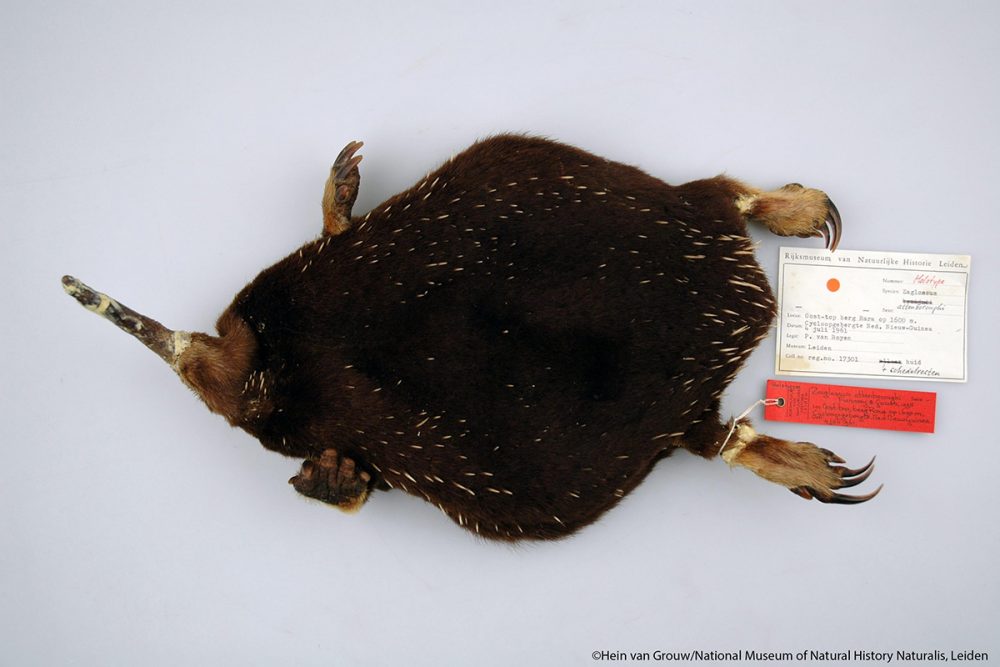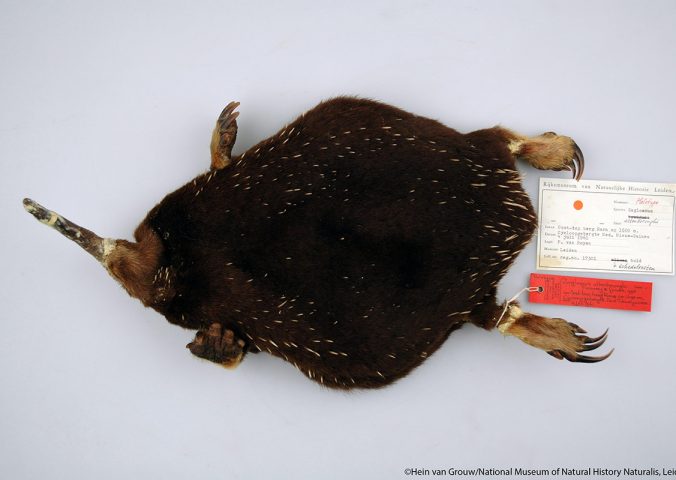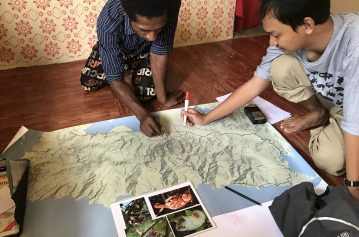About
Attenborough’s long-beaked echidna, also known as Sir David’s Long-beaked Echidna, is the smallest and probably most threatened of the three long-beaked echidna species. Echidnas and platypus are the only mammals to lay eggs.
It is known from a single specimen collected by a Dutch botanist during an expedition to the Cyclops Mountains in 1961. Despite more recent attempts to search for the species it has remained elusive and was believed extinct by the research community until EDGE team members visited the mountains in 2007. Although no individuals were sighted, echidna signs were found and interviews with local community members revealed that the distinctive animals were still present in the mountains.
Considered a delicacy and featuring strongly in local traditions, the echidnas are considered to be extremely rare even by hunters who regularly go into the forest of the lower peaks with trained hunting dogs. Except with the aid of dogs, long-beaked echidnas are extremely difficult to locate, as they occur at naturally low densities and as they are nocturnal, spend their days resting in shallow burrows or hollow logs.
Long-beaked echidnas belong to an ancient clade of egg-laying mammals called monotremes that includes the platypus of Australia. They are easily distinguished from short-beaked echidnas by their long snouts, which account for two-thirds of the length of the head. Their evolutionary ancestors were actually more similar to platypuses, until the two diverged around 46 million years ago leading the echidna lineage away from a water dwelling life, and back to a terrestrial one.
- Order: Monotremata
- Family: Tachyglossidae
- Population: Unknown
- Trend: decreasing
- Size: 0.45 - 1m
- Weight: 5-10kg
EDGE Score
Distribution
This species is known from one specimen collected in 1961 at an altitude of 1,600m, from a single mountain of Berg Rara in the Cyclops Mountains in extreme northern Papua Province, Indonesia. It has not been located in the adjacent mountain ranges of Torricelli and Bewani, although there are fossil records from the Bewani range. It may possibly occur in the Foja Range, which has not been adequately surveyed.
Habitat and Ecology
Virtually nothing is known about the habitat or ecology of this species. They were found in tropical montane moss forest, and other Zaglossus species are generally solitary and terrestrial, and are powerful diggers, which probably eat worms.


